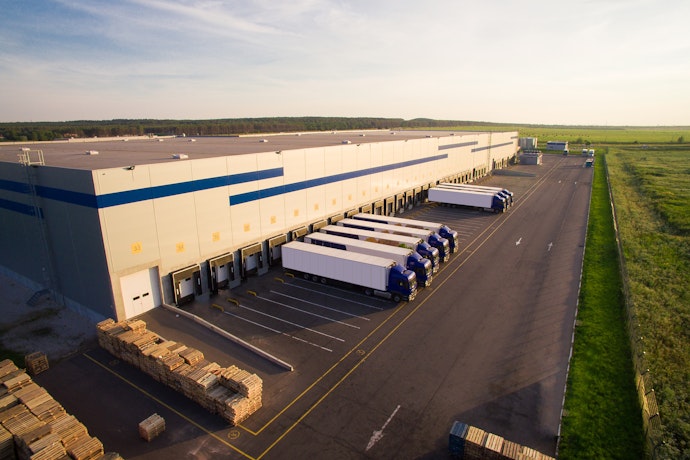How smart video fuels smart business
Learn how innovations in video powered by AI and machine learning are helping to reshape safety and efficiency for businesses.
Read more
For many organizations, the supply chain continues to become more complex and demanding, making effective fleet management, logistics management and enterprise resource planning (ERP) increasingly important. Unfortunately, the logistics management systems many companies have in place don’t always provide the level of visibility and automation they need once a vehicle leaves a warehouse or distribution center with a shipment.
Integrating GPS tracking and fleet management software into a company’s overall transportation and logistics operations can address this gap and deliver real value to carriers, owner-operators, truck drivers, shippers and even the end customer.
Logistics management is a part of supply chain management responsible for planning and facilitating the movement of goods from the point of origin (e.g., a factory or distribution center) to the point of consumption (e.g., a store or consumer’s home). This typically includes the departments that receive materials and supplies into a business (inbound logistics) and warehousing, stocking and shipping operations (outbound logistics).
Because of the critical role it plays within the supply chain, effective logistics management can have a significant impact on a business. Benefits include:
Logistics Management Systems (LMS) are generally focused on the movement of products, rather than the vehicles used to transport the products (sometimes referred to as transportation management software).
In many cases, this involves intermodal distribution channels using different types of transport such as a combination of road and rail. To track the entire end-to-end supply chain, businesses will often use a Transportation Management System (TMS) to manage transportation planning and operations.
A TMS is a solution that’s designed to streamline and automate the shipping process—from load planning and carrier selection to dispatch capabilities and invoicing. TMS is primarily used by businesses that ship and receive goods on a regular basis, such as manufacturers and distributors, ecommerce and retail businesses and logistics service providers.
Due the volume and frequency of the shipments, a TMS can provide significant financial and operational benefits:
Find out how you can achieve seamless integration with your transportation managment system.
While a TMS can help manage truckload planning and dispatch, tracking a shipment often remains a highly manual process that lacks true visibility. As a result, dispatchers must create schedules without a clear view of all drivers’ locations or remaining hours, and then manually enter data into multiple systems—possibly leading to mistakes. Likewise, drivers often struggle to manage their loads and can waste valuable time switching between multiple apps to check their schedules and Hours of Service, or to provide status updates when they arrive or leave a location.
By integrating GPS tracking into a TMS, businesses can monitor the movement of goods, in near real time, from origin all the way to the final destination and end consumer. This visibility enables more accurate shipment and progress estimates while reducing manual processes and unnecessary communication between customers and drivers.
Key benefits of an integrated TMS and GPS solution include:
In order to provide a more holistic, seamless logistics management solution, Verizon Connect has partnered with Xenolytic Data Solutions to provide a robust TMS integration with TMW and McLeod Software. This customized integration between TMS providers and Verizon Connect’s fleet management solution provides a fully integrated experience for trucking dispatch and operations management.
This integration provides a number of key benefits for dispatchers, including near real-time GPS vehicle locations and drivers’ HOS data to help improve visibility and make informed decisions. Automatic data sharing between systems such as vehicle and driver synchronization, geofence creation at customer locations and shift/load schedules can help to reduce admin efforts and errors.
Verizon Connect’s integrated solution also provides a number of benefits to truck drivers, including:
In today’s challenging supply chain landscape, bringing telematics and load management together provides greater visibility for better dispatching and an improved driver and customer experience for freight delivery. Find out more about integrating Verizon Connect products into your TMS system.
Tags: Fleet utilization, Cost control




Find out how our platform gives you the visibility you need to get more done.
Learn how innovations in video powered by AI and machine learning are helping to reshape safety and efficiency for businesses.
Read moreAre you ready for vehicle tracking? Go through our checklist to learn the signs you’re ready to add fleet tracking to...
Read moreLearn how AI, machine learning, and predictive analytics is improving fleet accurating and cutting costs.
Read moreLearn how telematics can lead to operational improvements.
Read more